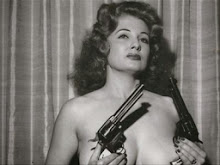
 A student once remarked that Hoffman's tale, "The Sandman," read like "a fairy tale for adults." I think this phrase is a good way to capture the fantastical and prosaic elements of the plot: on the one hand it's a story of tragic love affair, where the hero grows progressively out of touch with reality and descends into madness. On the other, it's a story filled with fantastical and implausible situations that are nevertheless real (that Nathaniel thinks Coppola is Coppelius is not just delusion, he actually is the same man, the clockwork woman Olympia does exist, Nathaniel does encounter the same violent struggle between father figures twice, etc.) And at the crucial points where the fantastical and the real overlap, the story lapses into a narrative indeterminacy, making it impossible to finally resolve the story as either a realistic portrayal of madness or a purely symbolic allegory.
A student once remarked that Hoffman's tale, "The Sandman," read like "a fairy tale for adults." I think this phrase is a good way to capture the fantastical and prosaic elements of the plot: on the one hand it's a story of tragic love affair, where the hero grows progressively out of touch with reality and descends into madness. On the other, it's a story filled with fantastical and implausible situations that are nevertheless real (that Nathaniel thinks Coppola is Coppelius is not just delusion, he actually is the same man, the clockwork woman Olympia does exist, Nathaniel does encounter the same violent struggle between father figures twice, etc.) And at the crucial points where the fantastical and the real overlap, the story lapses into a narrative indeterminacy, making it impossible to finally resolve the story as either a realistic portrayal of madness or a purely symbolic allegory.And that's the element of the story I want to highlight here: that the uncanny elements of the story are not just in the plot but also in the narrative structure. The story is constructed in such a way that the reader is implicated in its uncanny effects.
As I remarked in class the story begins by drawing attention to its own formal features: it begins one way (an exchange of letters), but breaks off and begins again (the narrator interrupts and addresses the reader directly). And each of these beginnings is kind of a false one---both begin by telling their audience (Nathaniel tells Lothaire, the narrator tells the reader) that the story really started elsewhere, in other events beyond those that take place in the time sequence covered in the plot.
The motif of doubling, a striking feature of this story, further blurs the interpretive lines. Not only do some characters have dual natures or multiple identities---Nathaniel's Good Father is also an Occult Dabbler, Spanlanzi is both Respectable Professor and Occult Dabbler (and thus, resembles Nathaniel's Good Father), the Sandman is both Real and Fairytale, the Sandman-as-Fairytale has both benign and horrific versions---but nearly all the characters can be grouped in pairs of opposites which disclose a hidden bond or similarity. While Clara/Olympia are opposites as "real" and "artificial," they are "the same" as objects of Nathaniel's desire and are designated by the same term: automaton. So too, are Nathaniel and Olympia both opposite (real/fake) and the same: both are children of dual-natured fathers and victims of Coppelius's violence. Other pairings can be discussed in the same fashion; it is clear that in this narrative everything contains its opposite just as Freud discovered heimlich in the etymology of its other---unheimlich.
That the story is told in the third person, but nevertheless from Nathaniel's point of view, accounts for other problems of easy resolvability. Events are presented to the reader in a kind of simultaneously "objective" and "subjective" fashion. The most striking example, at least to me, is the first moment the reader tumbles into interpretive free fall: the story's Primal Scene. The revelation that greets Nathaniel---that the Sandman is real and moreover, not an unknown monster, but a familiar figure---is nothing compared to the reader's horror and shock when Coppelius roughly screws off Nathaniel's hands and feet and puts them back on again. Suddenly we don't know where we are; the incident breaks upon us without any textual warning as if we were reading an entirely different kind of story, or maybe had been all along. As Freud points out in his essay, "...Hoffmann already leaves us in doubt whether what we are witnessing is the first delirium of the panic-stricken boy, or a succession of events which are to be regarded in the story as being real." Thus, while we can try to resolve our confusion with a naturalistic explanation (i.e., this is something Nathaniel dreamed after he fainted in terror), such an explanation does not cancel out the anxious affect produced by the sequence. From this point on the reader is not just reading about the uncanny, but is experiencing it.


























































No comments:
Post a Comment